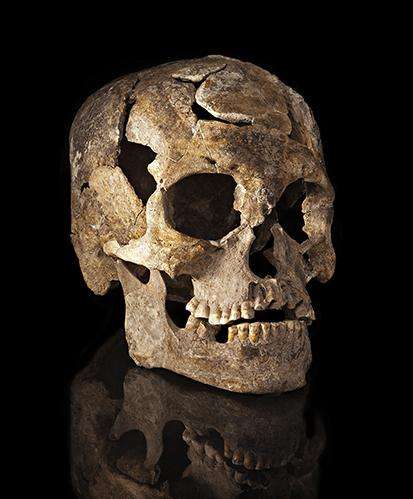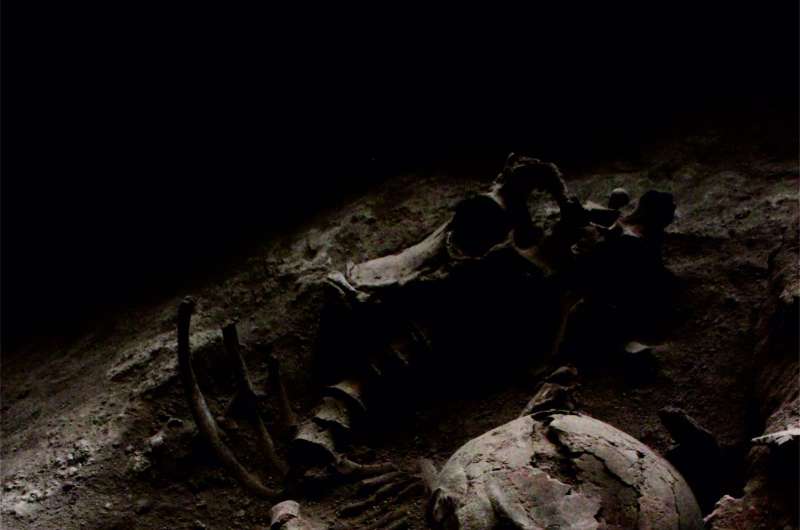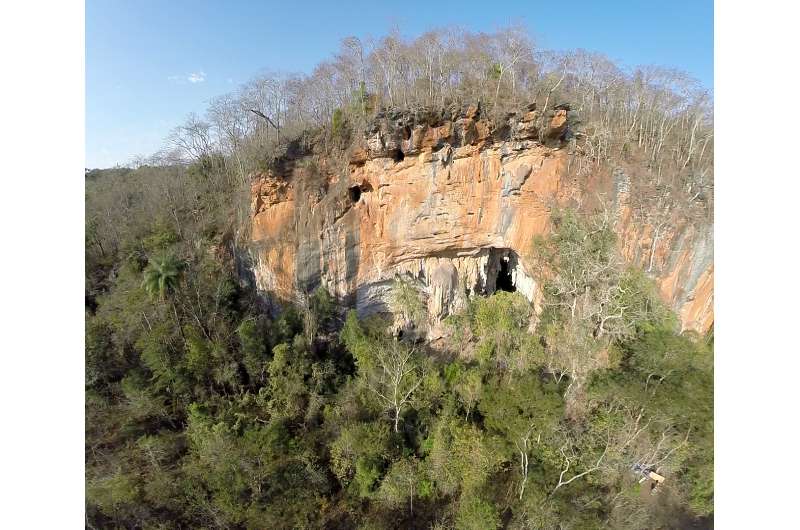February 23, 2017 report
Study of ancient skulls suggest there may have been multiple migrations into the Americas

(Phys.org)—A trio of researchers affiliated with institutions in the U.S., Europe and South America has found evidence that suggests the native people of South America likely arrived from more than one place. In their paper published in the journal Science Advances, Noreen von Cramon-Taubadel, André Strauss and Mark Hubbe describe how they applied imaging technology to skulls that have been unearthed in Brazil and what was revealed.
For many years, it was believed that a single wave of ancient immigrants made their way from Asia to North America and eventually to South America—the first people to exist in the New World. But that view has been challenged in more recent years. In this new effort, the researchers describe evidence they have found that suggests the first settlers of the New World may have come from more than one place.
To learn more about the ancestry of some of the earliest settlers to South America, the researchers used geometric morphometrics, a type of imaging technology that allows for creating 3-D images of an object, to examine skulls found in Lagoa Santa, Brazil. Prior research had dated the skulls back 7,000 to 10,000 years, which places them near the time when scientists believe South America was first populated by humans. The researchers report that the skull shapes of the ancient people differed markedly from those of modern indigenous South Americans, suggesting they came from somewhere else.
Interestingly, Hubbe was part of another team that recently imaged skulls dug up in Mexico. That team found that 500 to 800-year-old skulls (which places them before the arrival of Europeans) from two of three distinct regions matched one another but not with the third—suggesting that the third came from elsewhere. They have published their findings in the American Journal of Physical Anthropology.

To date, most in the field believe that at least one wave of immigrants came as Asian people made their way across the Bering Strait, which would have been frozen over for a time—it is not clear where other immigrants may have come from, but some have suggested Australia as a likely possibility.

More information: Noreen von Cramon-Taubadel et al. Evolutionary population history of early Paleoamerican cranial morphology, Science Advances (2017). DOI: 10.1126/sciadv.1602289
Abstract
The nature and timing of the peopling of the Americas is a subject of intense debate. In particular, it is unclear whether high levels of between-group craniometric diversity in South America result from multiple migrations or from local diversification processes. Previous attempts to explain this diversity have largely focused on testing alternative dispersal or gene flow models, reaching conflicting or inconclusive results. Here, a novel analytical framework is applied to three-dimensional geometric morphometric data to partition the effects of population divergence from geographically mediated gene flow to understand the ancestry of the early South Americans in the context of global human history. The results show that Paleoamericans share a last common ancestor with contemporary Native American groups outside, rather than inside, the Americas. Therefore, and in accordance with some recent genomic studies, craniometric data suggest that the New World was populated by multiple waves of dispersion from northeast Asia throughout the late Pleistocene and early Holocene.
Journal information: Science Advances , American Journal of Physical Anthropology
© 2017 Phys.org




















